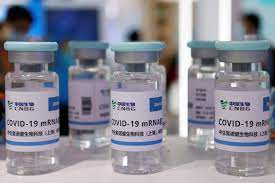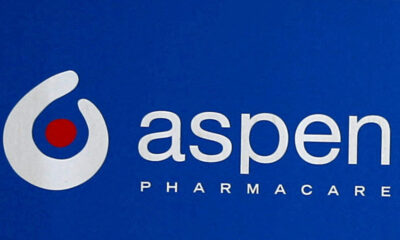mRNA vaccines not linked to miscarriage; COVID-19 shots in U.S. still protect against severe disease
(Reuters) – The following is a summary of some recent studies on COVID-19. They include research that warrants further study to corroborate the findings and that have yet to be certified by peer review.
mRNA vaccines not linked with pregnancy loss
Miscarriages do not occur more often in pregnant women who receive an mRNA vaccine against COVID-19, according to a new study. Researchers analyzed data from eight U.S. health systems on 105,446 women who were between 6 and 19 weeks into their pregnancies. Among them, 7.8% had received at least one dose of the Pfizer/BioNTech vaccine and 6% had received at least one shot of Moderna’s. Overall, 13,160 women suffered miscarriages, but the risk within a month after vaccination was no different than among those who did not get vaccinated, according to a report published on Wednesday in JAMA bit.ly/ 3z1rSbC. The researchers acknowledge that they may have been missing some data. For example, they did not know the women’s previous pregnancy histories. Still, they conclude, their findings will help doctors counsel pregnant women in their decision-making about the vaccines.
U.S. vaccines are protective against Delta variant
All three COVID-19 vaccines in use in the United States are effective at preventing hospitalizations and urgent or emergency care visits caused by the Delta variant of the coronavirus, although Moderna’s shots appear to be most effective, according to national data collected in June, July and August as Delta became predominant. Researchers with the U.S. Centers for Disease Control and Prevention (CDC) tracked nearly 33,000 urgent care or emergency department visits and hospital admissions of adults with COVID-19-like illnesses. Compared to people who were fully vaccinated, unvaccinated individuals were five- to seven-times more likely to test positive for the coronavirus, the researchers found. Vaccine efficacy against urgent care or emergency department visits “was highest among Moderna vaccine recipients (92%), followed by Pfizer/BioNTech vaccine recipients (77%), and was lowest (65%) for Janssen (Johnson & Johnson) vaccine recipients,” the researchers reported on Friday in the CDC’s Morbidity and Mortality Weekly Report bit.ly/ 2XjnrvX. The pattern was similar for hospitalizations. “These findings reaffirm” that all three vaccines afford “high protection” against coronavirus infections that make people sick enough to seek urgent or emergency care or be hospitalized, the CDC said.
COVID-19 autopsies yield clues for researchers
Sophisticated molecular tools are helping pathologists uncover new avenues for COVID-19 research during autopsies of patients who died from the disease. “By comparing the molecular signatures of infected and uninfected tissues, we were able to identify four major …. pathways driving severe COVID-19,” said Elisabet Pujadas of the Icahn School of Medicine at Mount Sinai in New York City. Those pathways involve blood vessels, cell-signaling proteins called cytokines, and cell activation, structure and degradation, she and her colleagues explained in a report published on Wednesday in The American Journal of Pathology bit.ly/ 3hufdrB. “Specific genes within those pathways can help explain why we see excessive inflammation and clotting and thus constitute exciting targets for potential new therapies that are aimed directly at the core of the problem,” Pujadas said. The research also found that while the coronavirus is known to use a cell surface protein called ACE2 as a “receptor,” or gateway, patients’ brains have high levels of other gateway proteins the virus could potentially use, called BSg and ANPEP. “While this does not by itself demonstrate that infection is occurring through these receptors, it demands that we think and study these receptors more broadly and not assume that ACE2 alone conveys the full picture,” Pujadas said.












